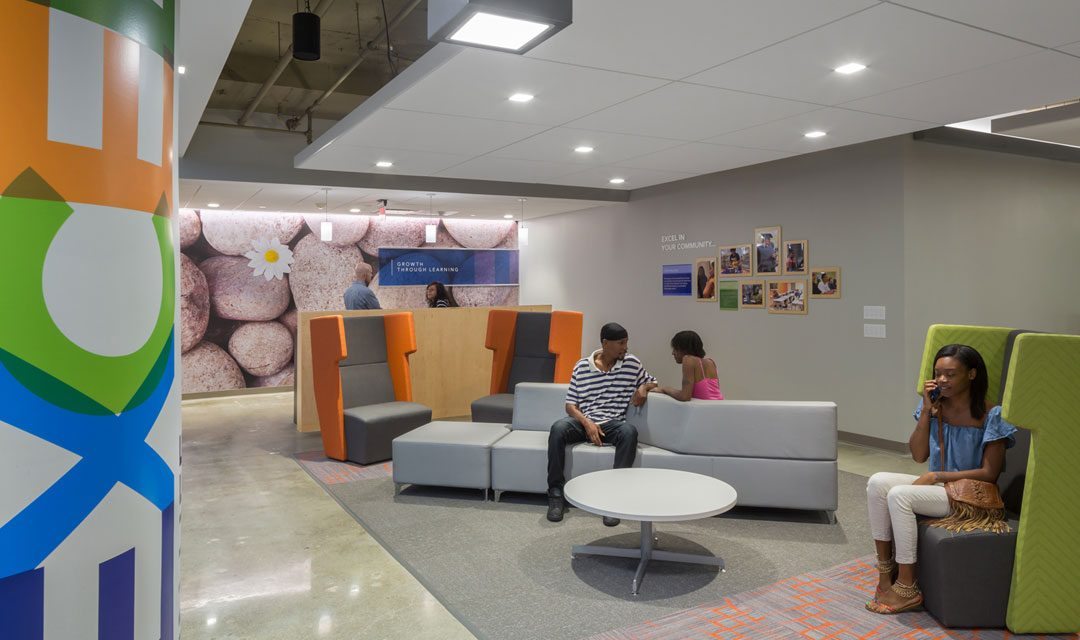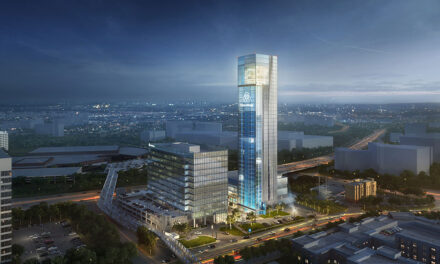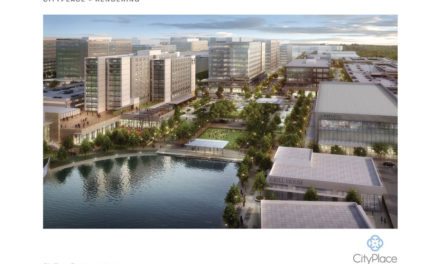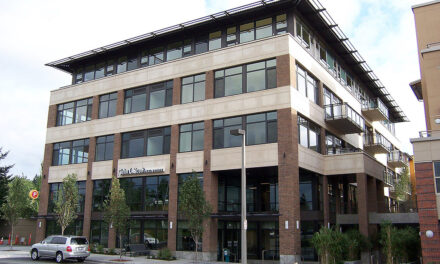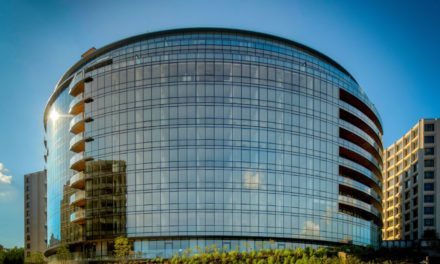People use this phrase when they want to talk about simplifying their day, and shedding the frantic pace and stress that defines many modern lives. It may seem like a convenient metaphor, but the feeling behind it is rooted in real, scientifically verified benefits for humans. We know – through programs like the WELL Building Standard and others that address human health and wellness in the built environment – that humans have a built-in response to nature. Through factors that reach back to our origins as hunter-gatherers, the human response to exposure to nature results in a number of benefits that reinforce human health, wellness and performance.
Experts such as Roger Ulrich, Stephen and Rachel Kaplan and Judith Heerwagen have conducted decades of research about the benefits of exposure to nature for humans. It helps prevent us from developing high blood pressure which weakens the performance of the heart, increasing the risk of heart attack, heart failure and sudden cardiac death. Exposure to nature also reduces the levels of the stress hormone cortisol. While cortisol is critical for our fight or flight responses, when we experience high levels of stress every day – a National Institute for Occupational Safety and Health (NIOSH) report documents that 40% of workers say their job is “very or extremely stressful” – that increase in cortisol can result in a greater demand on the adrenal system. The resulting problems include problems with memory and cognition, high blood pressure and heart disease, weight gain and belly fat, nerve damage, and hormonal imbalances that leave people feeling overwhelmed and exhausted. Nature counteracts both effects, helping to restore both our physical and mental energy, while renewing our ability to be productive and innovative.
We also know that the physical, emotional and mental costs of sedentary behavior can be the pathogenic foundation for chronic diseases like obesity, Type-2 diabetes, heart disease and high blood pressure. For that reason, many people and companies are looking for ways to bring nature into the built environment – not only to get people up and out of their seats and more active, but also for the tangible benefits that passive exposure provides.
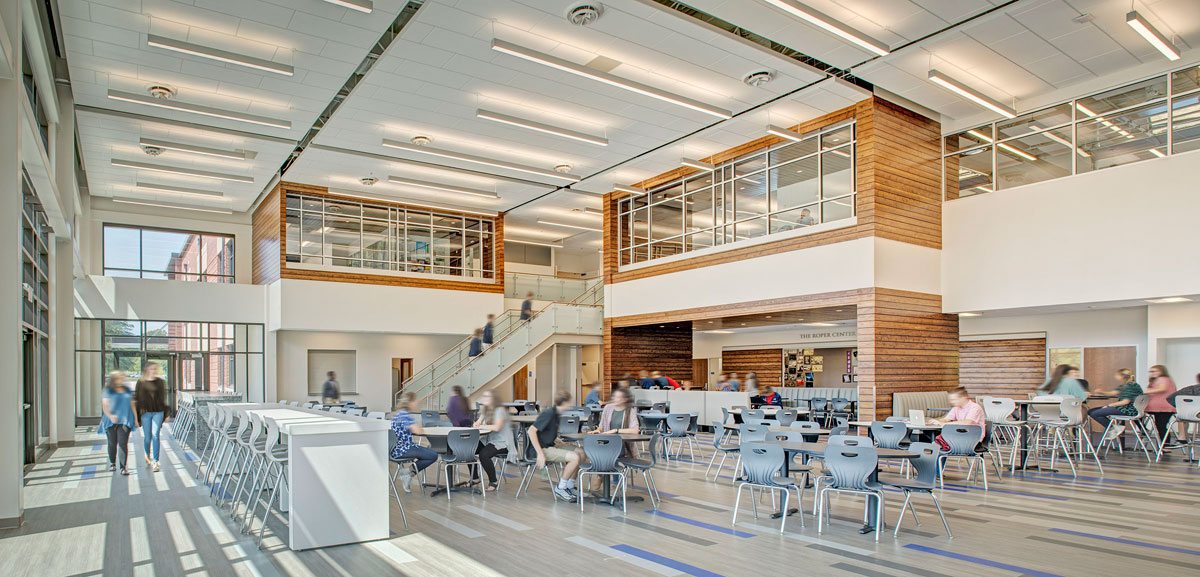
Natural materials such as wood are included at Covenant Day High School. Credit: Sean Busher Imagery
The concept of biophilia – literally, “a love of nature” – in human spaces is gaining traction in every type of space across the globe. Unfortunately, sometimes this results in an oversimplified approach such as, “If nature is good, then I just need to put plants everywhere, right?” While plants are never a bad response, there are many organizations that have a hard time purchasing, placing and maintaining plants, and it limits our understanding that beneficial biophilic measures can come from a number of places and strategies apart from the literal response of green plants. There are many relatively easy ways to apply biophilic design, it just requires some thought.
Ways to incorporate biophilic elements in space are easier than you might think. Imagine the variety of experiences you have outside, in nature. Daylight shifts and changes, shadows from trees move with the wind… shimmering light reflects off of water… and gentle breezes and fragrances move through the air. Adding elements to your built environment that share the dynamic or changing qualities of these natural phenomena help to engage people who are exposed to them, and provides variety and richness in these spaces.
NATURAL MATERIALS, AND NATURAL ANALOGUES
The most obvious way to bring nature into a space is to do just that, through the introduction of natural materials, plants and animals to a space. The wide range of diverse natural materials, like wood, stone and cork, and “just-picked” furniture incorporating live-edge details can go a long way to warm up a space through nature. Plants can pack a double punch. Herb gardens can be planted and located near pantries so that they actually have utility to the people in the space. Green walls can be passive and ornamental or actively useful, with the ability to act as natural air biofilters that work in conjunction with the HVAC system. Either way, whether active or passive, humans still derive a physical and mental boost from exposure to them. Another strategy I have seen implemented in built spaces is large fish tanks located with adjacent seating so that people have a place to perch while they watch the meditative movements of the fish within.
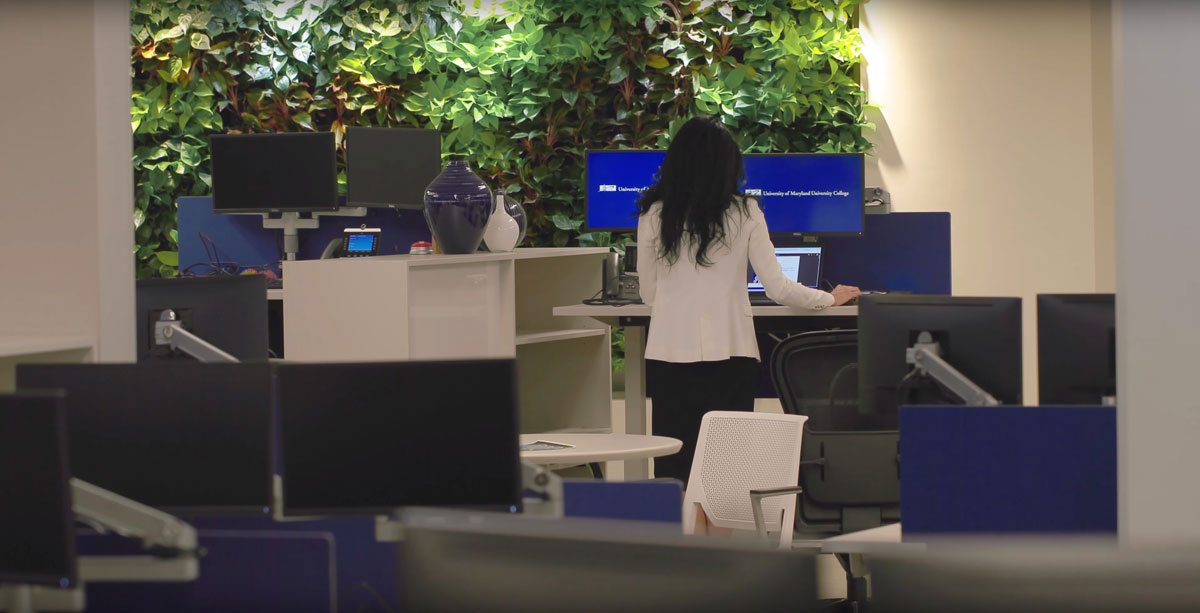
Green wall at University of Maryland University College Administration Building. Credit: Little
There are other ways to approximate animals and materials that are actually easy to deploy and maintain. Natural analogues – things that evoke nature – can be added in ways that while not so literal, remain effective. Mobiles and kinetic sculptures that mimic animal movements – birds flying, fish moving, and other natural rhythms of life – are effective ways to create the same feelings in humans without the budget for fish food. Patterns of leaves, trees, scales, or even dragonfly wings have been used in carpet, as wallcovering, or on film or glazing to create great visual interest. Light fixtures that create engaging or changing shadows approximate the movement of the sun effectively. Sounds are an effective way to engage the sense of people using the space as well. Whether through music or a gentle water feature, humans are attracted to these variations in their environments.
Another way to incorporate the variety and delight of nature is by creating spatial relationships that simulate the conditions and situations that pique our natural curiosity. Spaces that provide long, vista views, or enable a feeling of shelter or opportunity (refuge & prospect in the parlance of Jay Appleton, the English geographer) are appealing because humans are said to be attracted to the feelings of complexity, mystery, exploration and opportunity, which these conditions suggest – once again from our hunter-gatherer roots.
The market is seeing all kinds of biophilic applications, even some going as far as creating outdoor spaces, as an extension of the building. At Little, we’re testing different outdoor workspaces, in a setting we call Studio Fresh, to see what works and what doesn’t work for the outdoor office.
We have found that people are drawn to these spaces, as the weather supports their use and as a workplace culture embraces them as another avenue for work. Our highest user group (65%) is the millennial generation, and 80% of our users say the space increases their focus. The most frequent use of the space (67%) is for solitary work or 1-2 person meetings, but 88% say that they would hold a meeting in the space with larger groups as well, for the biophilic benefits they’d gain.
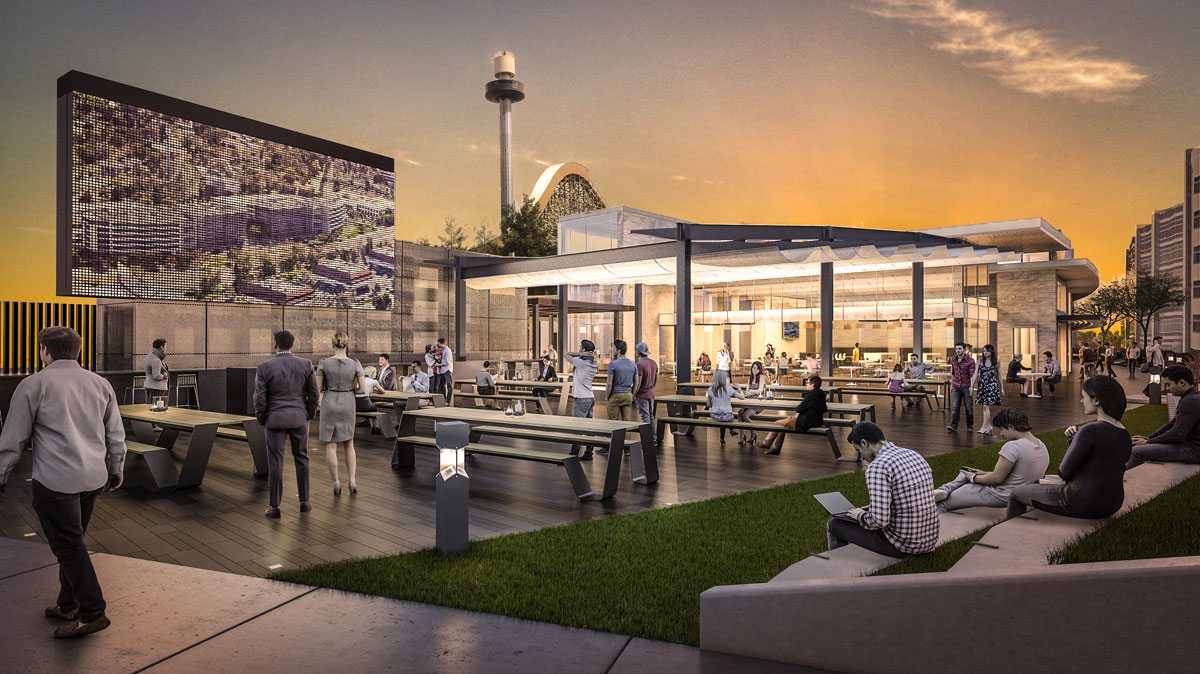
Large outdoor areas help allow employees to work, collaborate and be social while being exposed to nature. Credit: Little
Our research has shown that people reject certain types of furniture in these outdoor settings. They prefer rimless square or rectangular tables to work on, and the surfaces can’t be too light because of the glare from the reflected sunlight (which makes shading important). We have also found that users want a variety of work settings and postures in these outdoor spaces, with one very large exception. Our surveys and measurements show that users do not want any type of furniture that might reinforce the misperception that they are “goofing off”, so any posture that seems a little too close to reclining isn’t something they want to use. We have also seen evidence of the mirror neuron that humans have at work; when people see the spaces being used by others, they are more likely to use them, themselves, and this socialization makes these spaces culturally acceptable and sought after.
Little is currently employing this on a larger scale for a project in Santa Clara, CA for Prudential Holdings. The project consists of the outdoor space between four buildings and site amenities that were part of a structure attached to a parking deck that included conferencing, fitness and a cafe for the campus. The client’s goals are to create a stronger sense of community by enhancing the design elements of those amenities, by leveraging better use of the outdoor space between the buildings. Prudential was interested in creating a stronger sense of community among the tenants, and provide alternate work and recreational spaces.
Eat, Play, Restore are the themes for the performance of the space which includes a large outdoor seating area under a shade canopy, and adjacent to a 45’ long wall into the cafe that opens completely to let the outside in, and vice versa. A 15’ x 30’ media wall provides visual excitement, and a long, linear fireplace creates a comfortable vibe, providing the dynamic play of the fire as a strong biophilic element. The space also includes an outdoor service bar capable of serving food and drinks, based on the event.
The realization that humans have a physical and mental need to be exposed to nature is something that provides designers a reason to do what’s right for the people occupying their spaces. This exposure to nature or things that remind us of nature provide ways for people to balance the needs that their bodies have to reduce non-productive stress, and really enjoy these spaces. They may not always know why they enjoy them, but their bodies will.
About the author
Carolyn Rickard-Brideau, AIA, NCARB, LEED AP BD+C, provisional WELL AP
Partner and the Workplace Global Practice Leader, Little

Carolyn Rickard-Brideau, AIA, NCARB, LEED AP BD+C, provisional WELL AP
Carolyn Rickard-Brideau is a Partner and the Workplace Global Practice Leader at Little. With over 33 years in practice, she is known by her colleagues as a visionary, innovative and diversely talented leader. Driven by an infectious curiosity about the connection between architecture and the human body, Carol has spent the last 10 years studying, researching, writing articles and speaking at events across the country about the impact of building design on the health of its occupants. Capitalizing on this industry-leading knowledge, Carol has played a valuable role in educating the design industry on how space has a direct connection with our physical and mental fatigue, awareness, memory cognition, depression and cardiovascular/musculoskeletal health. Her expertise has been published in numerous major publications, including Health, Metropolis, Interiors & Sources and The Leader (CoreNet) magazines, as well as multiple Business Journals across the United States. Carol has also been an influential guest speaker for National Public Radio, TEDx Arlington, CRE Radio and industry events such as the 2017 AIA National Convention, IFMA’s World Workplace, NeoCon World’s Trade Fair and the Urban Land Institute’s Women’s Leadership Symposium.
About Little
Little, an international architecture and design firm, is recognized for developing exceptional design solutions that generate business results in the workplace, community, healthcare and retail industries. With over 395 professionals, Little delivers results beyond architecture by combining expertise in traditional architectural services (architecture, engineering, interior architecture) with proficiency in additional diversified architectural consulting services (land development services, facilities planning and space management consulting, graphic design, building technology applications, and computer animation and internet application services).

